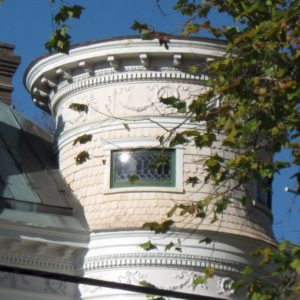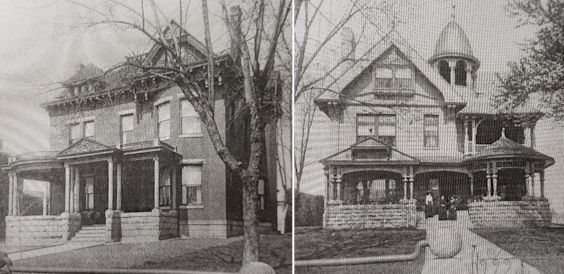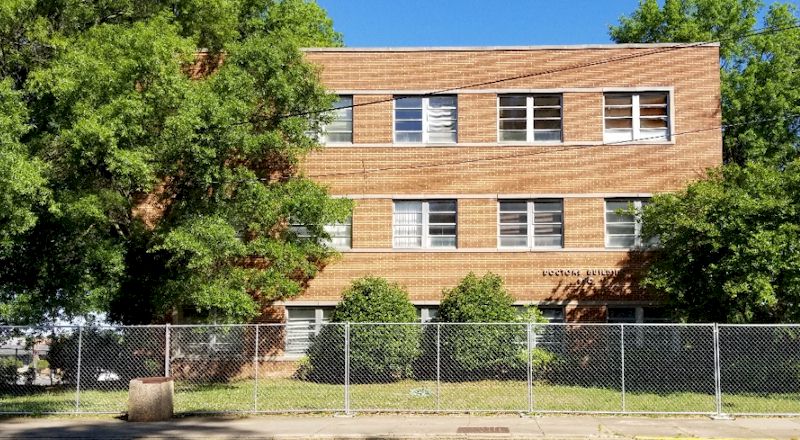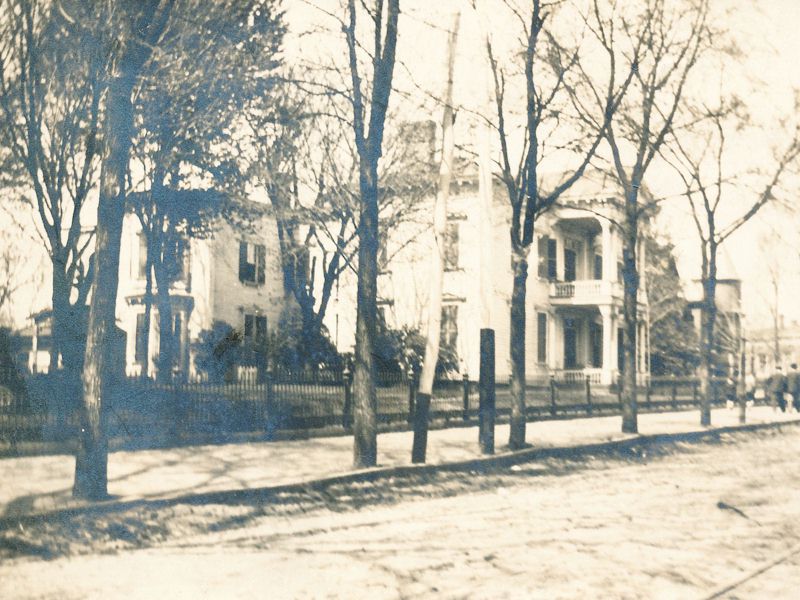Change is something few of us are entirely comfortable with, but it is perhaps the one constant of life, as it has been a constant for the Old West End.
 The nineteen teens and twenties heralded a return to the aesthetics of American design, and a gradual disregard for the opulence of the Victorian Era. The transition is evident in the houses built during the turn of the century on Sutherlin Avenue, and in examples such as the Wedding Cake house (the cake-like turret is shown at right), where Adams and other classical influences can be seen. By the 1930’s, neo-classical was all the rage and houses were built in that “purely American style” that ironically was borrowed from Roman and Greek influences. It was those styles that shaped our country’s most iconic buildings.
The nineteen teens and twenties heralded a return to the aesthetics of American design, and a gradual disregard for the opulence of the Victorian Era. The transition is evident in the houses built during the turn of the century on Sutherlin Avenue, and in examples such as the Wedding Cake house (the cake-like turret is shown at right), where Adams and other classical influences can be seen. By the 1930’s, neo-classical was all the rage and houses were built in that “purely American style” that ironically was borrowed from Roman and Greek influences. It was those styles that shaped our country’s most iconic buildings.
It was during this era that The Old West End Drug Store was at its height. The mahogany-fitted shop offered ice-cream, hand made on the premises, and was the place where the uptown set went on hot summer nights to drink lime-aids. A dime would buy a round trip ticket on the street car, and here you could escape the heat of a summer night and get an ice cream sundae with your sweetheart.
Dr. Brydon was one of the first apothecaries, well established long before the profusion of druggists who popped up as commonly as the corner grocers. The Old West End Drug Store was a staple of the neighborhood, offering more than hand-rolled pills and ice cream. It was a place where people gathered to find a sense of community, and where those waiting for a street car on a cold winter’s day, could find shelter from the howling wind that whipped along Holbrook Avenue.
The shop closed its doors for good in December of 1937, much to the sorrow of many.
But the 1930’s was generally a time of transition. Automobiles were becoming quite common, affordable now to the middle class. Even still, it was not unusual to see the occasional hitching post, like the one on the corner of Main and Holbrook Avenue, where, “Dr. Harvie and Dr. James could be seen engaged in professional discourse over some difficult case as the former stood by his bay mare and the latter by his buggy.”
In December of 1940, the Old West End saw many businesses had closed shop, including the College Sweet Shop and an adjacent storefront, where a toy repair shop was temporarily established in anticipation of the Christmas season.

The 1950’s, with its vaccinations and hypodermic needles, saw the transition from doctors who paid house calls came to their patients, to patients who instead went to visit their physicians in doctors’ offices and hospitals. The construction, by nine doctors, of the Danville Doctors (below) building where the old Dibrell house (above right) stood, was considered a major advancement, as was the demolition of the Pritchard house (above left), which allowed for the realignment of Holbrook Avenue with Holbrook street at the Main street crossing, where many an accident had occurred, and which, with the growing traffic, was becoming more common still. (More about these mansions from last week.)

The Holland Mansion (at very top) and several other homes were lost to the construction of the “new” Young Men’s Christian Association building in the 1960s. (More about the Holland family from last week.)

These stories are just great. I hope that someday they can be on outdoor plaques with the old picture of the house and put in front of the existing house; this would make for a fabulous walking tour of the Old West End for years to come.